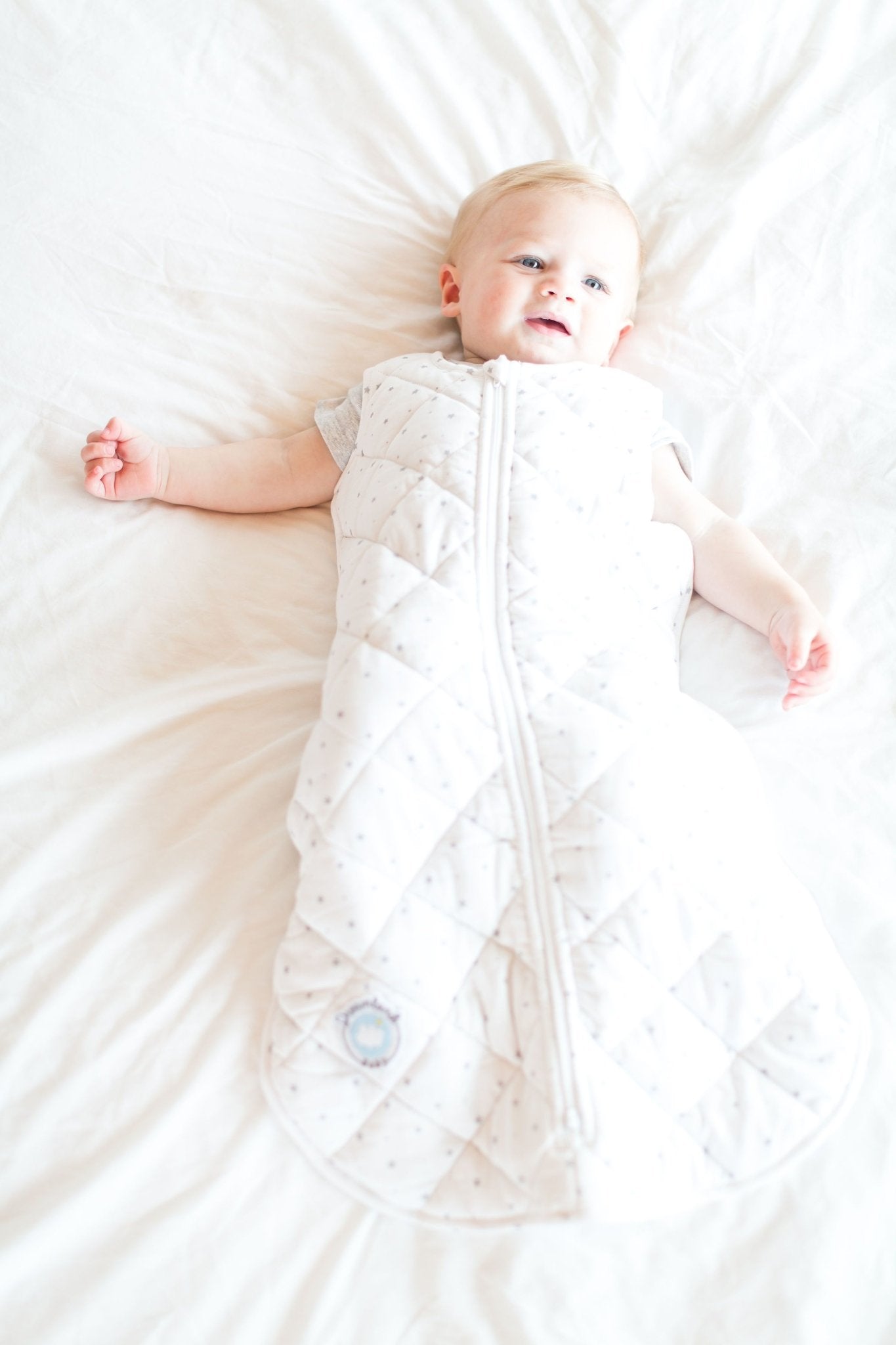As a certified pediatric sleep consultant, hands down the number one topic I get asked about is naps. The notorious 30-45 minute nap has so many parents stumped and desperate for help. When I work with families, naps are always a focus. This is not only because parents need that break in the day, but also because proper daytime sleep sets baby up for success for the longest possible stretch of nighttime sleep.
When we’re talking to new parents about naps, we go through the following naptime checklist to be sure their baby has everything he or she needs for restorative daytime rest.
Here we'll go over:
- how to set reasonable expectations
- ways to create a soothing sleep environment
- why it's important for baby's tummy to be full
- keeping baby awake for just the right amount of time
- why you want to put your baby down "drowsy but awake"
You and your little one will be on your way to naptime success in no time!

1. Set Reasonable Expectations
If you have a newborn or even a baby under 3 months of age, it’s very reasonable to expect your baby to have naps that last just one sleep cycle (about 30-45 minutes). As your baby hits the 3-month mark and gets closer to 4 or 5 months in age, naps will start to lengthen, especially if you’re implementing the elements in this post. Be patient with naps with a newborn– your baby will get there. It’s important to give yourself a lot of grace with this and we recommend not comparing yourself to other parents and what their little ones are doing. All babies are different and it will take some a little longer to get the hang of longer naps.
2. Create a Calm Sleep Environment
Because daytime sleep is very light, creating a calming sleep environment is extra important. Here's what you'll want to do:
- Make the room as dark as you can get it.
- Turn on white noise on for the duration of the nap to help with soothing and also to drown out noise from around the house. Be sure to use the white noise setting or something consistent like rain. (A sound that goes in and out (like ocean) will be too stimulating.)
- You also want a nice, cool room with an empty and safe crib or bassinet (no loose blankets or stuffed animals should be in your baby's crib before the age of 1.)
- Lastly, be sure your baby is swaddled or in a wearable blanket. A weighted one from Dreamland Baby is the perfect choice since the weight provides a hug-like feeling to calm your baby.
Take the time to get this environment just right for your baby - it's important!
3. Make Sure Baby Has a Full Tummy
A full tummy is one of the most important pieces to the nap time puzzle.
It’s crucial that your baby is getting full feeds every 3 hours to ensure they’re able to make it through their nap. Small feeds can encourage snacking, which makes it harder to get through that nap without being hungry. Really try and fill baby up and keep baby awake during each feed. This will stretch their little tummies so they're able to consume more and make it through the entire nap as well as go longer stretches at night.
Ideally, these feeds will not be right before naps for two reasons:
1. Your baby is less likely to take the full feeding if eating while sleepy, and
2. Baby can start to depend on feeding to fall asleep.
Instead, an eat-wake-sleep cycle is recommended.
4. Perfect the Wake Window
A "wake window" is the amount of time that’s ideal for your baby to be awake before a nap or bedtime. It ensures that baby’s sleep pressure is high enough to make it through the nap, but not so long that they go down overly tired.
Your baby’s wake window will be as short as just an hour at 1 month of age and extend up to 4-5 hours by 12 months. Being aware of this wake window is a key element to teaching independent sleep. If your baby is going down overly tired, it will be much harder for he or she to fall asleep on their own. Learn your baby’s sleep cues as well – every baby is a little different!
Read, "Baby's Sleep Patterns and Schedules for the First Year" for further tips on scheduling and figuring out wake times depending on your baby's age.
5. Put Baby Down Awake
You’ve probably heard the term “drowsy but awake.” This is something you'll hear many use for the ideal way to put your baby down in the crib.
What I’ve found is that most parents are putting their little one down too drowsy. If your baby’s eyelids are drooping or fluttering, they are technically in the first stage of sleep. You want your baby to enter this first stage of sleep once they are already in bed.
When I’m working with families, I tell them it’s actually better to lay baby down too awake than too tired. It might sound surprising, but a happy baby is more likely to fall asleep independently. And once they hit that overly tired point, it can be more difficult. Laying your baby down awake will teach them to fall asleep on their own, which will ensure they can transition between sleep cycles and end the pattern of short 30-45 minute naps. The stronger this skill gets, the better naps will be!
Need help with sleep training to help your baby fall asleep independently? Read Dreamland Baby's article, "A Helpful Guide for Sleep Training Your Baby," for the most effective methods!

Checking the Boxes Means Naptime Success!
Once you’ve checked everything off the list, you can feel confident knowing you’ve provided your baby with everything he or she needs to have a great nap. A quality nap looks different at each age. Here’s how I typically break it down:
0-3 months: 30-45 minutes or even shorter is normal, feel free to extend it in your arms!
3-6 months: ideally stretch that nap to at least an hour so it’s restorative sleep – but be patient – naps are getting better and better during this time with consistency.
6-12 months: 1-1.5 hour naps after a proper wake window should be pretty dependable unless your baby is sick or going through a regression/leap.
Be patient and know all the work you put into implementing this naptime checklist will pay off!

Jess Hudson is a certified pediatric sleep consultant with a passion for helping families create a happy & healthy home through sleep.
As the mom of three children, Jessica quickly learned the importance of good sleep for the health of her babies, her own health and her marriage. They all thrive when everyone is well-rested. She also saw that though each child had a very different personality, they all responded positively to routine and learning to self-soothe.
For more on naps and so much more, please visit Jess on Instagram: @sleepshopjess


Share:
Best Books to Read to Your Baby Before Bed
Coping with Your Baby's Witching Hour